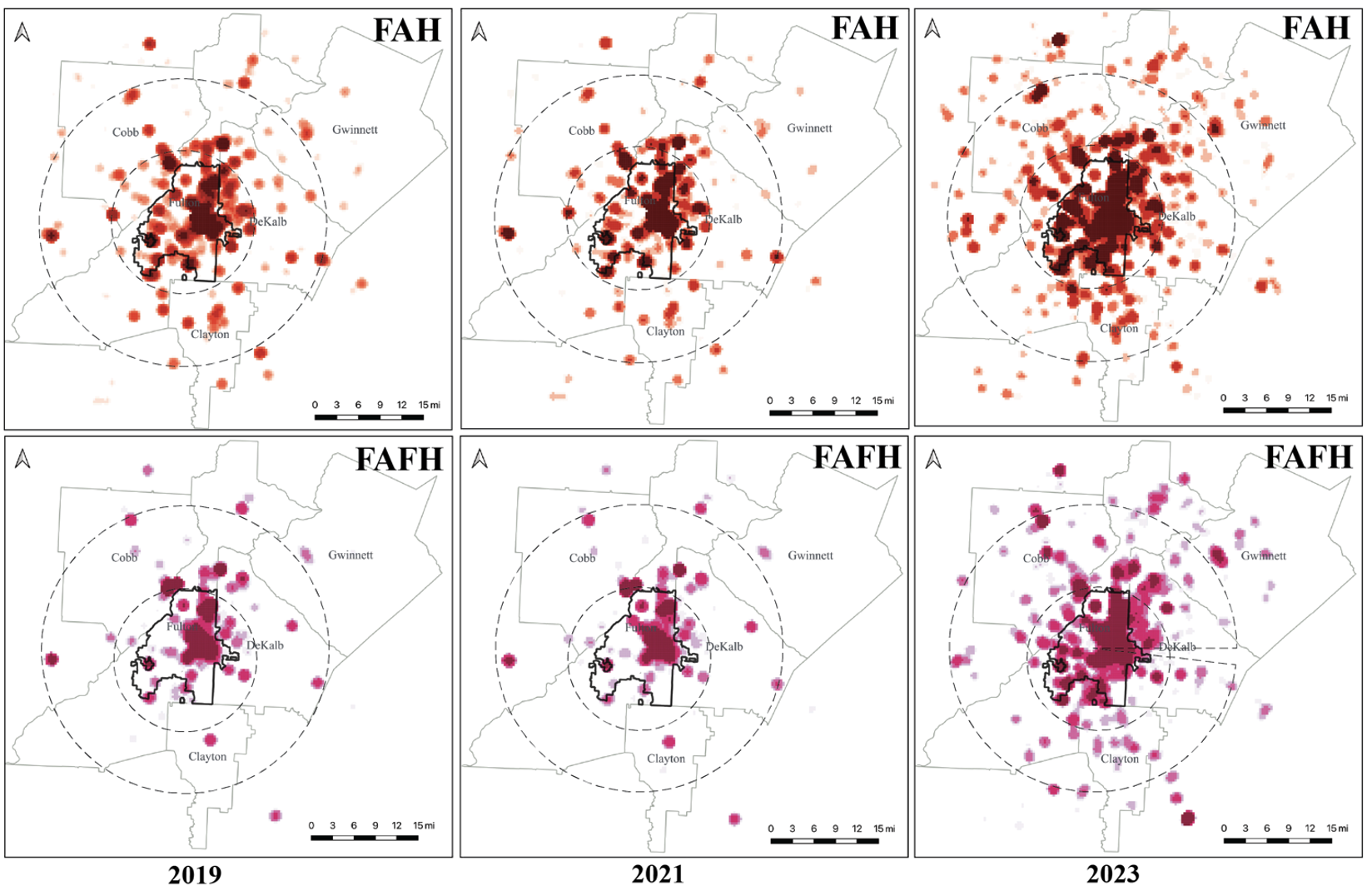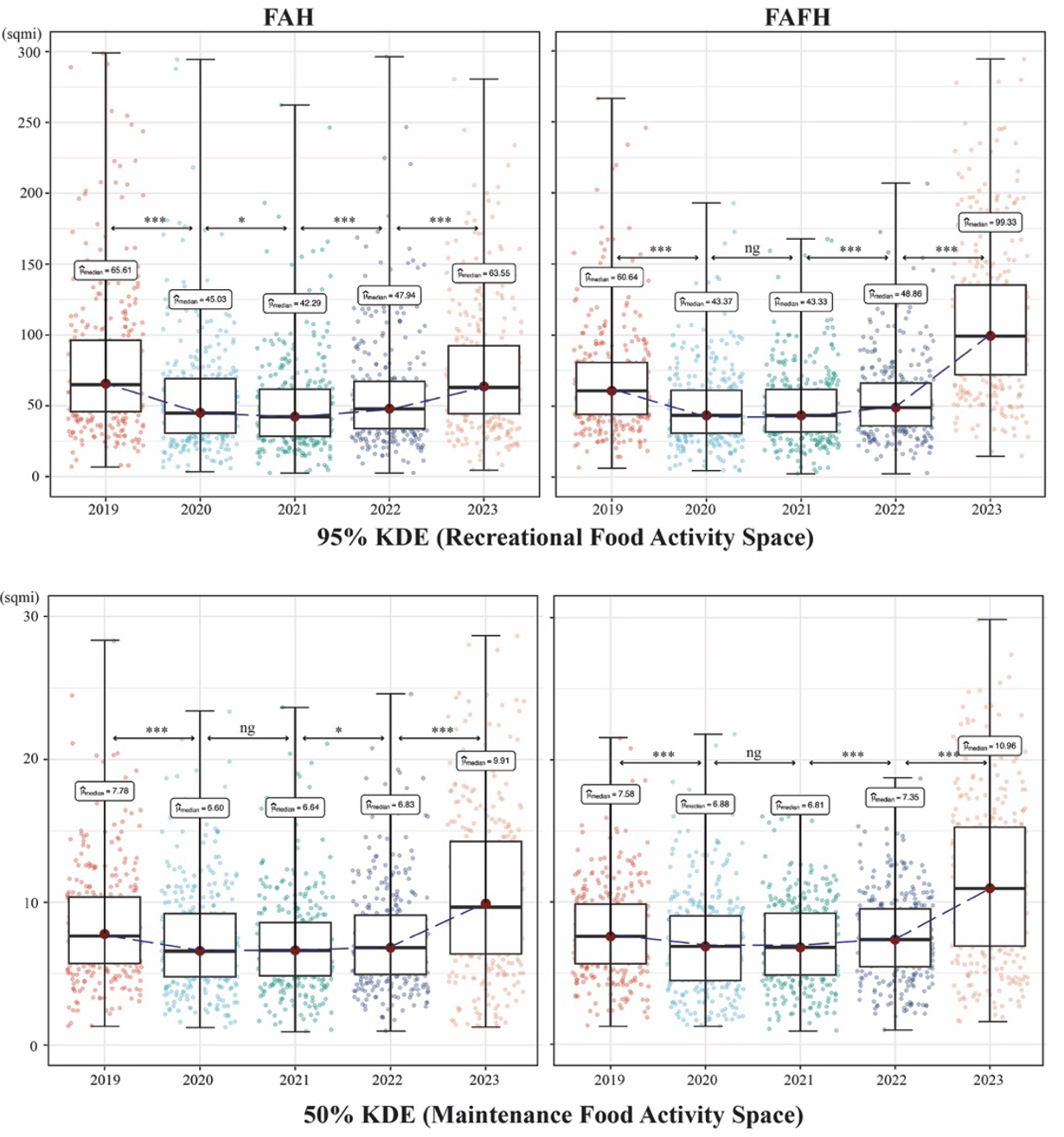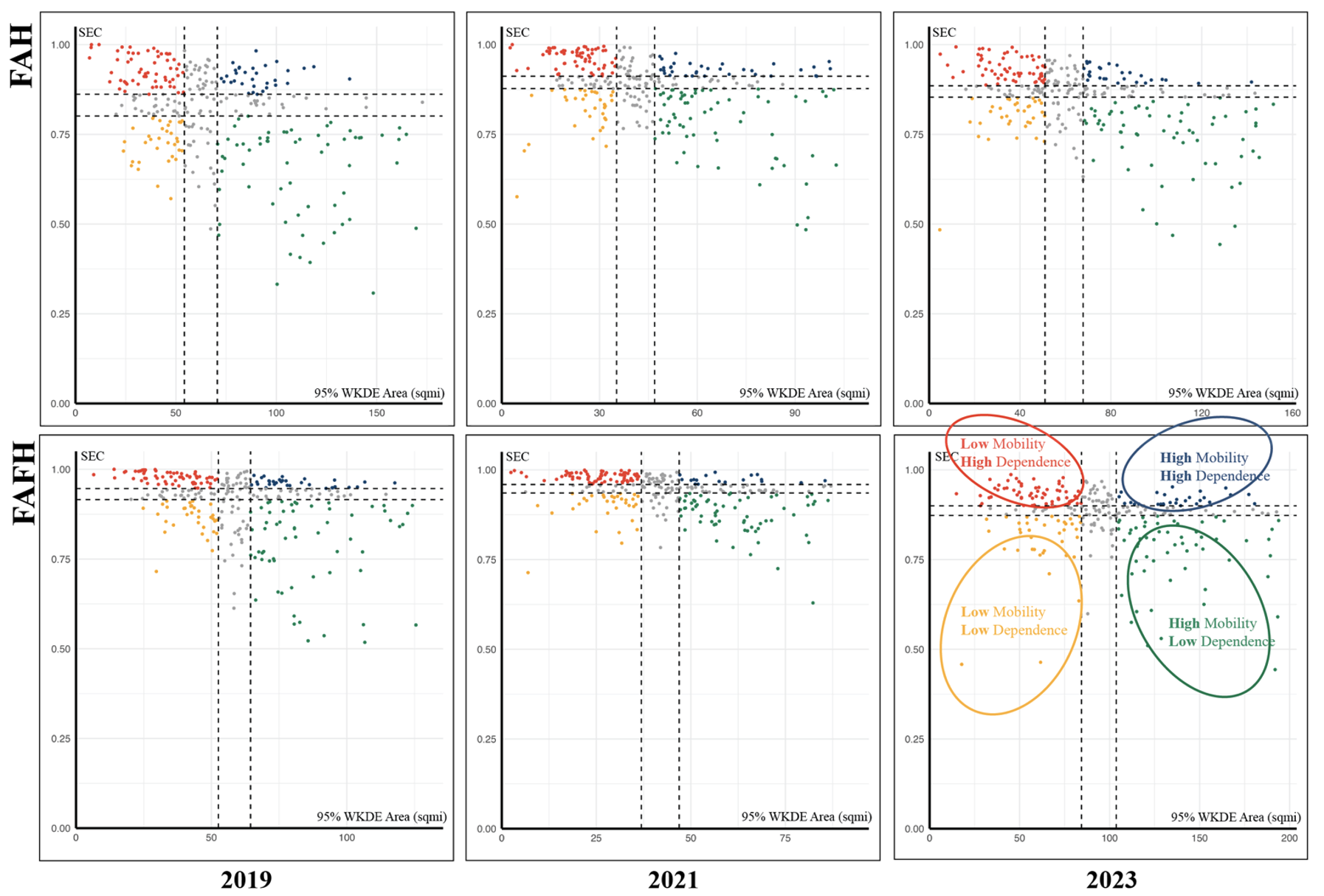(working paper from Fall 2023)
Clear pandemic-induced temporal patterns emerge when examining the characteristics of food activity spaces at the city level.
Compared to the pre-pandemic period, the total visits to food venues per capita reflected a substantial downturn from 2020-2022, with annual Food-At-Home (FAH) visits per capita plummeting from 64.72 trips in 2019 to 27.63 trips in 2021 (-57.3%). The preference to visit restaurants for residents in Atlanta also declined dramatically (-62.2%), with 721 fewer full-service and 372 fewer limited-service (fast food) restaurants visited in 2021 than in 2019.
Longitudinal trends in the 95% WKDE food activity spaces align with the patterns above.Despite a drastic decline in total visits to food venues during the 2020-2022 period, the contours of the 95% WKDE food activity spaces did not exhibit noticeable change from that of 2019. On the contrary, the post-pandemic surge of food activity in the first three quarters of 2023 is otherwise well translated into a substantial broadening of food activity spaces.

Fig.1 Weighted Kernel Density Estimation (95%) food activity spaces of FAH, FAFH, and FAH+FAFH categories of food venues.
2. Variations in characteristics of CBG’s food activity spaces
The median area of FAH activity spaces decreased from 65.61 square miles (sqmi.) in 2019 to 45.03 sqmi. in 2020 (p < .001). Similarly, FAFH spaces diminished from 60.64 sqmi. in 2019 to 43.37 sqmi. in 2020 (p < .001). The median home-to-venue distances for FAH and FAFH were around 3.5 mile, which is consistent with the finding that the average distance to the usual groceries is around 3.9 miles in 2019 (USDA, n.d.). The median distance in 2023 increased from 3.50 to 4.24 miles (FAH, p<.001) and 3.52 to 4.13 miles (FAFH, p<.001), indicating a shift towards more distant travels for groceries and restaurants.

Fig.2 . CBG-level total area (square miles) of recreational (95%WKDE) and maintenance (50%WKDE) food activity spaces by food venue category and year.
3. The Spatial Engel’s Coefficient (SEC) and socio-economic disparities in food activity spaces
I introduced the Spatial Engel’s Coefficient (SEC) to quantify the geographic dependency of food activities on the overall daily mobility landscape. This serves as an essential adjunct in evaluating the mobility burden associated with food procurement. The high mobility-high dependence (A) typology refers to CBGs with expansive food activity spaces that constitute a substantial segment of their daily activity space. The high mobility-low dependence (B) typology is the “voluntary-burden” group, comprising individuals who engage in extensive food-related activities that diverge from their customary daily routes. The low mobility-low dependence (C) type, or the “least-burden” cohort, corresponds to CBGs with confined food activity spaces coupled with a high degree of independence. The low mobility-high dependence (D) type is the “restricted-burden” group, corresponding to CBGs with less but restricted activity exertion.

Fig.3 Food activity space typologies in Atlanta from 2019 to 2023 classified by two dimensions: the 95% WKDE area (x-axis) representing the level of food activity mobility, and SEC (y-axis) measuring the coverage of total activity space on food activity space.